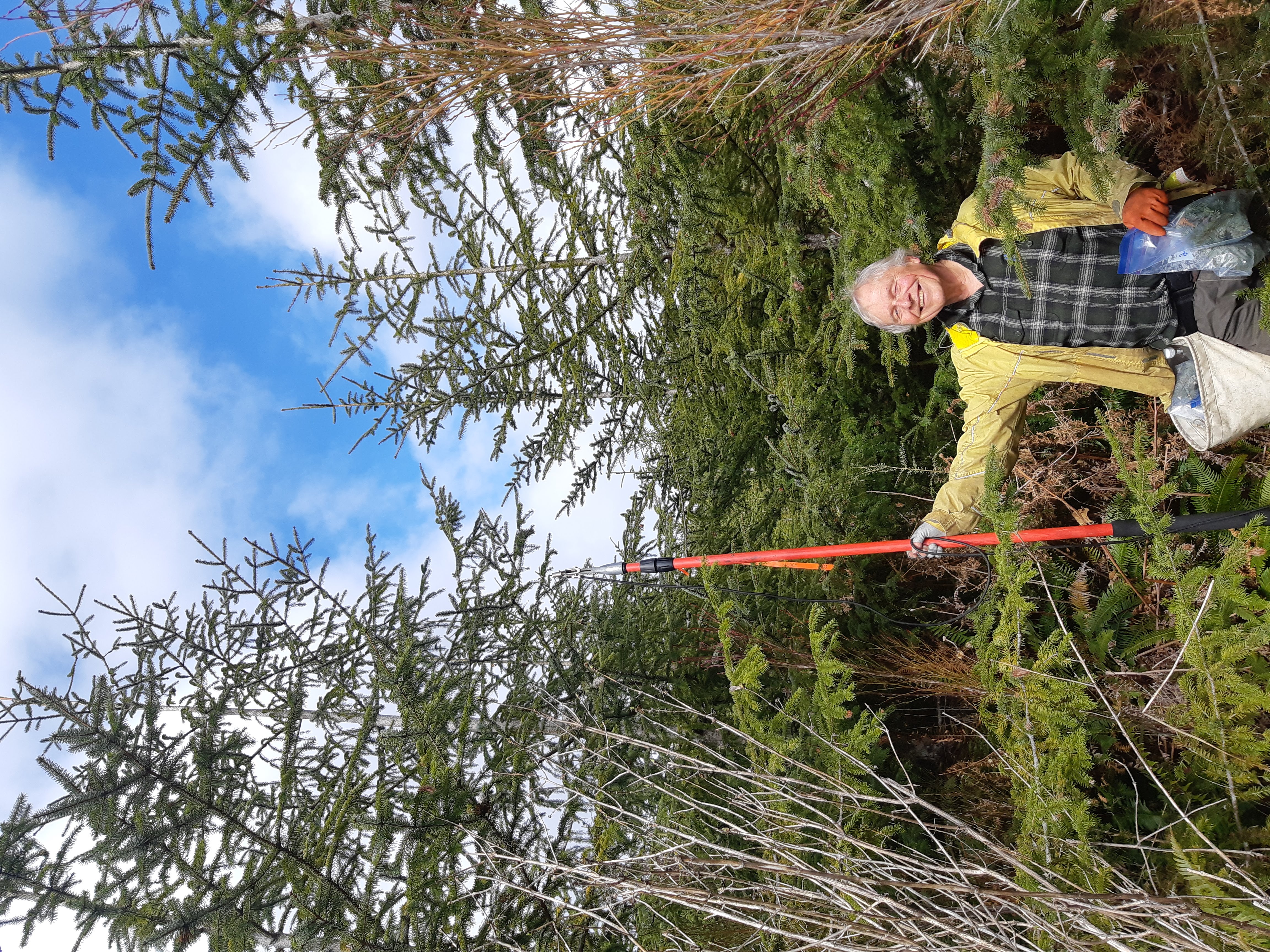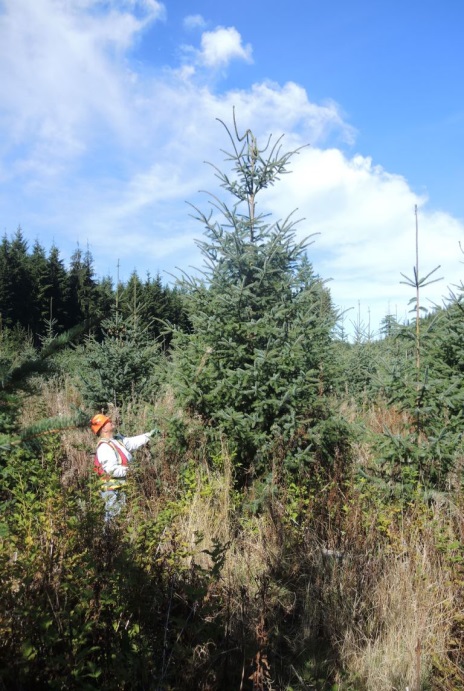Sitka spruce tree breeding program
Sitka spruce is an integral component of the coastal rainforest of western North America. However, commercial planting of Sitka spruce is low for numerous reasons, including its wood properties and susceptibility to the white pine weevil (Pissodes strobi).
A pest resistance screening and breeding program against the white pine weevil was initiated in the early 1980’s, and high levels of resistance are now available in seed lots from seed orchards in British Columbia. This insect resistance program is one of the most successful resistance programs in the world for a forest tree species.
Second generation trials were established to verify that the offspring of resistant parents still carried high resistance. However, very little weevil damage was observed in these trials, likely due to overall high resistance in the trials preventing weevil populations from establishing there. This absence of weevil damage allowed instead for the assessment of genetic gain for timber volume, which is now incorporated into seed lots.
New trials are testing families with high genetic gain for both weevil resistance and volume alongside “bait blocks” of non-resistant trees which will hopefully allow weevil populations to build within the trials and provide a better test of resistance.
References
- Alfaro, R.I., King, J.N. and vanAkker, L. 2013. Delivering Sitka spruce with resistance against white pine weevil in British Columbia, Canada. Forestry Chronicle 89(2): 235-245.
- King, J.N. R.I. Alfaro, P. Ott and L. vanAkker. 2012. Phenotypic evidence suggests a possible major-gene element to weevil resistance in Sitka spruce. In: Sniezko, Richard A.; Yanchuk, Alvin D.; Kliejunas, John T.; Palmieri, Katharine M.; Alexander, Janice M.; Frankel, Susan J., tech. coords. 2012. Proceedings of the fourth international workshop on the genetics of host-parasite interactions in forestry: Disease and insect resistance in forest trees. Gen. Tech. Rep. PSW-GTR-240. Albany, CA: Pacific Southwest Research Station, Forest Service, U.S. Department of Agriculture. pp. 54-64.
- King, J.N. R.I. Alfaro, M. Grau Lopez and L. vanAkker. 2011. Resistance of Sitka spruce (Picea sitchensis (Bong.) Carr.) to white pine weevil (Pissodes strobi Peck): characterizing the bark defence mechanisms of resistant populations. Forestry 84(1):83-91.
- Robert, J.A. , Madilao, L.L., White, J., Yanchuk A., King, J.N., and Bohlmann J. 2010. Terpenoid metabolite profiling in Sitka spruce identifies association of dehydroabietic acid, (+)-3-carene, and terpinolene with resistance against white pine weevil. Botany 88(9): 810-820.
- Developing Sitka spruce populations for resistance to the white pine weevil: summary of research and breeding program. B.C. Min. For. Range, Res. Br., Victoria, B.C. Tech. Rep. 050.
Sitka Spruce Weevil Hazard Decision Tool

A scientist making advanced-generation selections from a second-generation progeny trial near Jordan River.

A forester observing a failed weevil attack on Sitka spruce at the Pinch Creek site.
